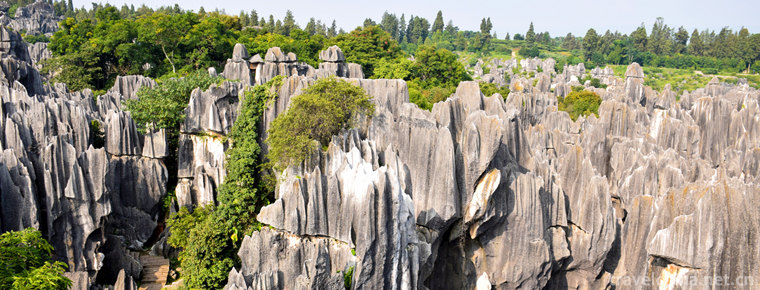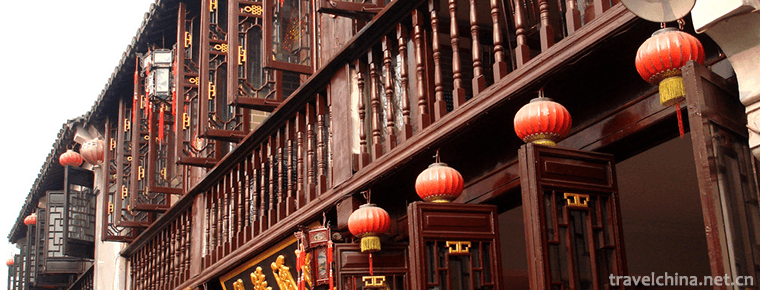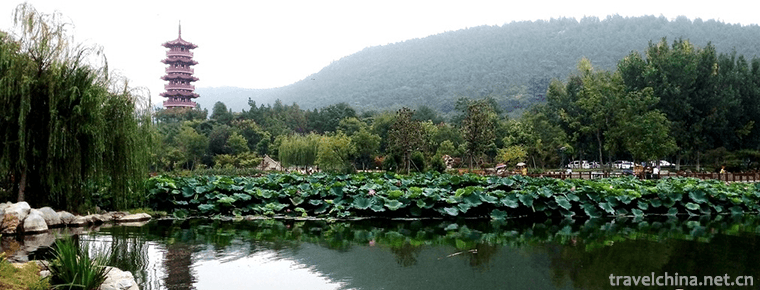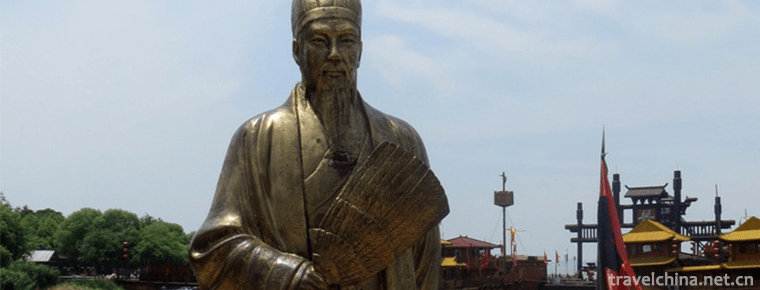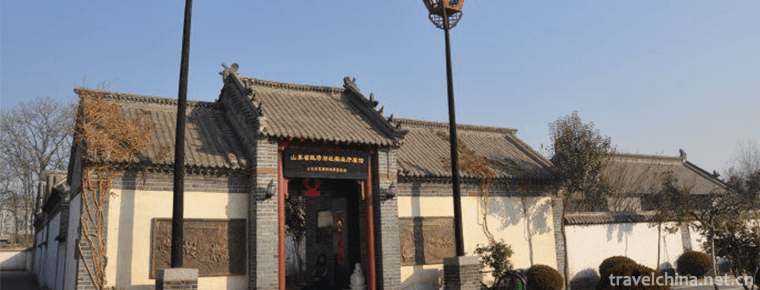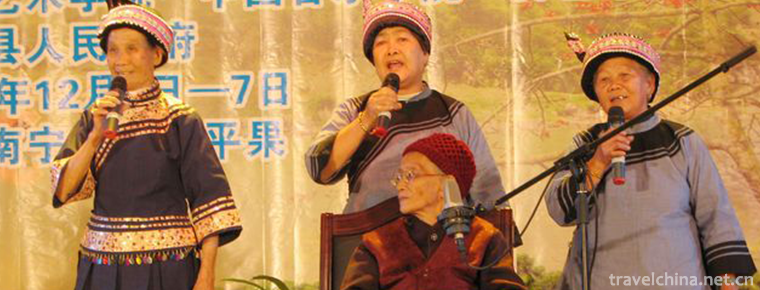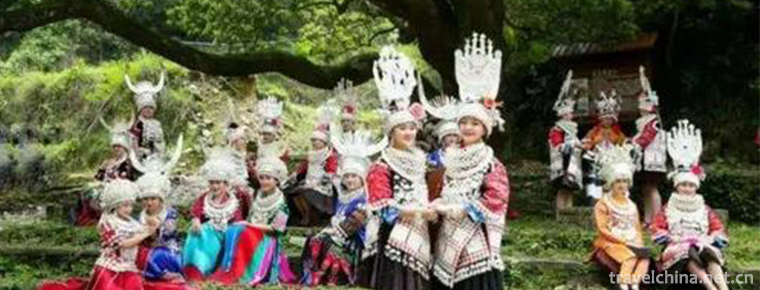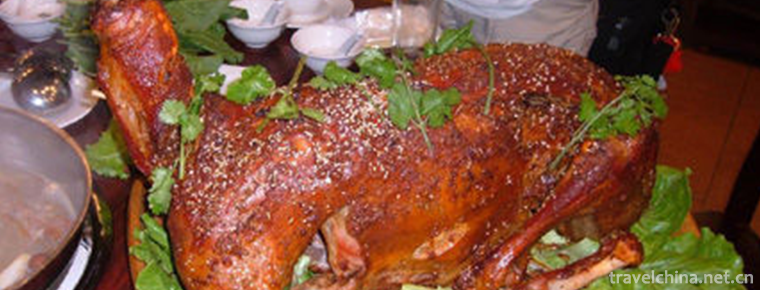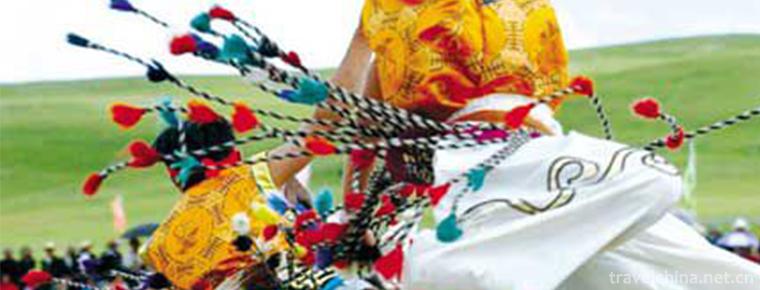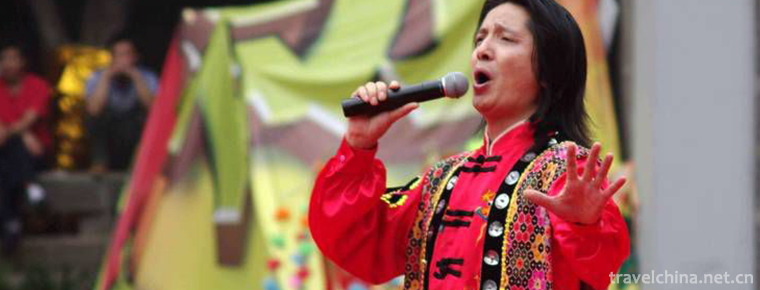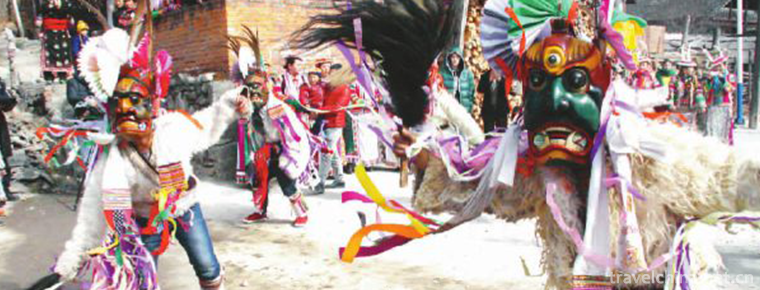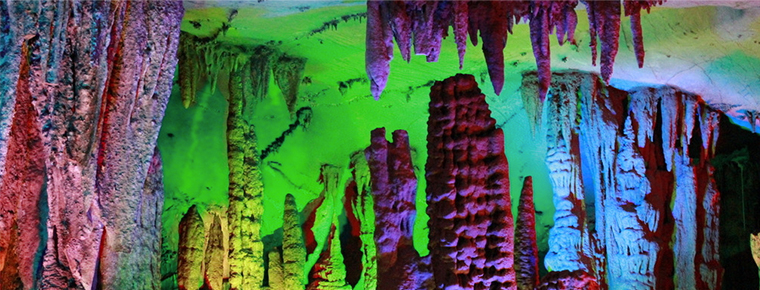Hengshan Scenic Area
Hengshan Scenic Area
Hengshan Scenic Area, located in Nanyue District of Hengyang City, is a holy place of Quanzhen sect, the mainstream Taoist religion, with an elevation of 1300.2 meters. Because the climate conditions are better than the other four mountains, where is Maolin Xiuzhu, green all the year round; exotic flowers and plants, fragrant at four o'clock, the natural scenery is very beautiful, so Nanyue has the reputation of unique beauty. Wei Yuan of the Qing Dynasty, Hengyue Yin, said: "Hengshan is like walking, Daishan is like sitting, Huashan is like standing, Songshan is like lying, only Nanyue is like flying."
Hengshan is north-east-south-west. It starts at Futianpu Township, Hengshan County, Hengyang City, and reaches Zhangmu Township, Hengyang County, Hengyang City, 38 kilometers in length, Hengyang County Jiepai Town in the west, and Nanyue District, Hengyang City, in the east, with a maximum width of 17 kilometers and a total area of 640 square kilometers.
The main peaks of Hengshan include Huiyan Peak, Zhurong Peak, Zigai Peak, Tianzhu Peak, Yuelu Mountain, etc. The highest peak of Zhurong Peak is 1300.2 meters above sea level. There are 26 rivers on the northern, Eastern and southeastern slopes of Hengshan Mountains. They are injected into the Xiangjiang River through the Yiyi River, Jingpo River, Wushi Port, Longyin Port, Xuanzhou Port and Bailu Port in Hengyang, Xiangtan and Hengshan Counties.
Hengshan Scenic Spot is a key national scenic spot, a demonstration site of national civilized scenic spot and a national AAAAA tourist area.
geographical position
Hengshan Scenic Spot is located in Nanyue District, Hengyang City, Hunan Province, which is an important comprehensive transportation hub and an important town in central and southern China. It belongs to Hengshan County of Hengyang City. Hengshan Mountain is Hengshan County by local people, and Nanyue Mountain by local people. It is better to ask local people to say Nanyue Mountain. The north latitude is 27 2'- 27 26', and the east longitude is 112 33'- 112 47'. Hengyang Basin lies in the south of Hengshan Mountain and hilly area in the middle of Hunan Province in the east.
Geology and geomorphology
The main parts of the mountain body of Hengshan Scenic Spot are as follows: the peak forest granite fault block Zhongshan is located at 1000 meters above sea level, and the Hengshan granite dome, which occurs in the form of basement rock beads, rises after several faults, is trapped by strong weathering and slope scouring. Within the range of no more than 20 kilometers in length and no more than 20 kilometers in width, there are 19 overlapping mountains over 1000 meters, forming the peak forest-like mountain body. The mid-low mountains of knife-peak granite are located at an altitude of 300-1000 meters, and are arranged asymmetrically in ribs on both sides of the main ridge of Hengshan Mountain, with east-west strike and North-South parallel. The ridge on the hidden side extends 4-5 km to the West and 2-3 km to the east. The height of the ridge decreases stepwise from the base to the outside. The downward cut of the river is remarkable. The ridge is sharp as a knife edge, the slope is steep and the valleys are quietly explored. Narrow ridge and steep mantle metamorphic rocks are located at 200-800 meters above sea level, close to the South and North ends of the granite Zhongshan Mountains. They constitute an important part of the Hengshan Mountains, such as Jianjianfeng in the South and Tianma Mountains in the north at 951 meters above sea level.
Climatic characteristics
Hengshan scenic spot belongs to subtropical monsoon humid climate type. In winter, the Hengshan Scenic Spot is mostly controlled by dry and cold air mass in Eurasia. Frequent northward cold currents cause freezing rain and snow, and the climate is wet and cold. In summer, it is mostly affected by warm and humid air mass in low latitude ocean, with high temperature and humidity.
At the turn of spring and summer, Hengshan Scenic Spot is in the transition zone of alternating cold and warm air masses, with frequent frontal, shear line and cyclone activities, resulting in wet and rainy weather and changeable weather. During midsummer, the ridge height of subtropical high controls the eastern and central Hunan areas, resulting in high temperature and extreme heat. In a year, it is usually coldest in January and hottest in July. The average temperature of Hengshan Scenic Spot is 17.6 C. Winter is warmer. The average temperature in January is 5.3 degrees Celsius. The average temperature in spring and autumn is between 17 and 19 C, and the temperature in autumn is slightly higher than that in spring. The temperature in summer is higher. The average temperature in July and August is between 28.6 and 29.5 C. The annual rainfall in Hengshan Scenic Area is about 1553.5 mm. The guaranteed rate of precipitation over 1000mm is over 90%. From April to September, the average precipitation was 820 mm, accounting for 61% of the annual precipitation.
Main attractions
Zhurong, Zigai, Tianzhu, Shilin and Furong are known as the "Five Peaks of Hengyue". Li Bai's poem "Return to the wind to disperse the five peaks of snow, often flying flowers fall into the Dongting." Du Fu's poem "Zhurong Wufeng Zun, the peak number is low." Gai Wufeng is the representative of Hengshan Mountain.
Zhu Rong Feng
Zhurong Peak, 1289.8 meters above sea level, is located in 112 41 05 longitude east, 27 18 latitude north. It is located in Nanyue District of Hengyang City. It is the highest peak and main peak of Hengshan Mountains. Legend has it that Zhurong once traveled here, hence the name of Feng.
Purple peak
Zigai Peak, 1028 meters above sea level, is situated at 112 degrees 43'56 east longitude and 27 degrees 18'45 North latitude. It is located in Nanyue District of Hengyang City. There are fairy pools on the top of the peak and Dongling Cliffs under the peak.
Lotus Peak
Furong Peak, 114 meters above sea level, is located at 112 degrees 41'45 east longitude and 27 degrees 17'20 North latitude. It is situated in Nanyue District of Hengyang City. It is called Rongfeng in ancient times. It has a square lecturing stone on the peak and four characters of peace in the world.
Shi Ling Feng
Shilin Peak, 1189 meters above sea level, is located in the east longitude 112 degrees 42'20 and north latitude 27 degrees 17'30. It is located in Hengyang City, Hengyang City. On the peak, there are wind caves, thunder pools and chanting altars. It is said that it is the site of Chen Zhenren Alchemy. There is a fairy stone room under the peak. Passers-by often hear the sound of chanting.
Tianzhu Peak
Tianzhu Peak, 1061 meters above sea level, is located in the east longitude 112 degrees 40'55 and north latitude 27 degrees 16'10 and is located in Nanyue District of Hengyang City.
Heng Mountain memorial archway
Hengshan archway in Nanyue is the Mountain Gate of Nanyue. It is tall and magnificent. Nanyue Hengshan archway was built in 1989. It is 20.4 meters high and 21.7 meters wide. It is the largest stone archway in China. The above design is a true picture of Nanyue, commonly known as the mountain crested sucker of Hengshan Mountain in Nanyue. There is a saying that Hengshan Mountain in Nanyue is one of the ancestors of China. Emperor Shennong of Yandi changed it into a sucker with a divine whip, so the sucker pattern became the mountain emblem of Hengshan Mountain in Nanyue. Above the mountain emblem is the relief of "Four Wonders of Nanyue". That is, the height of Zhu Rongfeng, the beauty of Tibetan Sutra Hall, the depth of Fang Guang Temple and the wonder of Shui Curtain Cave.
The couplets on the stone pillars in the middle of the memorial archway are: Xiu Qilai Gaoyu, see the four wonders, Wufeng scenic spot, civilizationally known as the Olympic area, there are two virtuous chants, seven ancestors Daochang.
Shenzhou ancestral temple
Shenzhou ancestral temple is located at Baoxinling, the gate of Hengshan Mountain in Nanyue, under the Yubanqiao Bridge. It is an enlarged Guanyin Temple, a thousand-year-old ancient temple. It is a large magical Temple integrating Buddhism, Taoism, Confucianism and folk beliefs. The ancestral temple of Shenzhou is divided into four parts: the first is the ancestral temple with 100 surnames; the second is the 72-line ancestral temple; the third is the Sanjiao Jiuliu sage temple; and the fourth is the Buddhist temple.
Humanistic history
Buddhism
The founder of Buddhism in Hengshan Scenic Area is Master Huisi. During his two years in Chen Guang Da to Heng Mountain for more than 40 years, he led more than 40 disciples to create the Buddhist temple of Ding Huishuang, to carry forward the thought of one mind, three points of view and the thought of Ding Huishuang, and to form his own unique style and unique view, thus becoming the source of the thought of Tiantai Sect in China and opening up a new world for Buddhism and even Buddhism in China. Therefore, Master Huisi is known as the founder of Hengshan.
Hengshan was also one of the three centers of the Tang Dynasty. Tang Suzong set up the Peni Discipline Collection in Hengshan and Huikai was the first choice. The Tang Dynasty Zong chose 21 monks to set precepts for Daming Temple in Hengshan, Hengshan Huikai won the first prize. Master Yunfeng of Hengshan was chosen as the leader when Tang Suzong ordered the elders of the Three Great Virtues of the Five Mountains. He lived in Hengshan for more than 50 years and spent 50,000 years as a scholar, ranking first in the country at that time. Xifu was called a barrister at that time. After his death, Liu Zongyuan wrote Ta Ming. As there were a number of high-ranking monks in Hengshan, Hengshan Luzong became one of the three major centers in the country at that time.
Taoism
Hengshan is the most famous Taoist holy place in China. Its Taoist culture has a long history, many high ways, rich theory, pioneering sects, far-reaching impact, is China's precious human resources. Taoism was the first religion introduced into Hengshan. According to the records of Heng Yue Zhi in Ming Dynasty, the first Taoist to enter Hengshan was Zhang Daoling, the founder of Zhongtian Teacher Taoism. He traveled from Mount Tianmu to Mount Hengshan, climbed Zhurongfeng, visited Qingyu altar, Guangtian altar and Chaoli Zhurongjun Temple. However, Zhang Daoling did not have a descendant in Hengshan, nor did he set up a sect. During the reign of Emperor Wudi of Jin Dynasty, the famous Taoist King Valley God and Pi Zhiquan lived together in Jinmudian Hall of Hengshan Mountain. After years of refining internal and external Dan, the fetal interest was returned to yuan. They were named Mr. Taihui and Mr. Taisu by Emperor Wudi of Jin Dynasty, but there was no sectarian inheritance and they did not know where to end. The later Taoist figures who had great influence in Hengshan were Wei Huacun, wife of Wei, and the most influential sect was the Shangqing sect.
Shou culture
Hengshan longevity culture has a long history, "Star Classic" contains: Hengshan Hengshan corresponds to the star of 28 stars, the star is in charge of the human life span, Hengshan is known as Shouyue. The giant stone carvings of Song Huizong in Shouyue, Hengshan imperial inscription, still exist in the emperor rock of Jinjianfeng, Hengshan. The first sentence of Rebuilding the Monument of Hengshan Temple written by Emperor Kangxi is: Hengshan is a giant town in Tiannan, Shangying Beidou Yuheng, also known as Shouyue, once again Royal Hengshan is Shouyue. History records of the past dynasties are often called Hengshan Mountain of Hengshan Mountain of the past dynasties by the mountains of comparative longevity and the mountains of main longevity.
In China, people often use "Furu East China Sea, Shoubian Nanshan" to express good wishes. The so-called Shoubian Nanshan originally came from "The Book of Songs Xiaoya", "such as the constant moon, such as the rise of the sun, such as the birthday of Nanshan". Similarly, the life span of people is as long as that of Nanshan, "Shoubi Nanshan" refers to Hengshan Mountain.
academy culture
Hengshan Academy culture began in Suzong Tang Dynasty, when Yehou Li Bizhi was concealed under Yanxia Peak in Hengshan, reading and discussing Tao. He lived in a very rich collection of books and passed on 30,000 axes. Later, Li Fan, son of Li Bi, built the now famous Yehou Academy in Hengshan as a memorial to Suizhou Academy. From 816 to 824, Zeng Guofan wrote in Re Xiu Wending Academy Records of the Qing Dynasty: "The Academy of the World, Chu." For Sheng, Chu Academy, Heng Sheng."
Anti Japanese culture
The first Hengshan Military Conference was held in November 1938. Chiang Kai-shek decided to accept the proposal of the Central Committee of the Communist Party of China. The two parties jointly set up a training course for guerrilla cadres in Nanyue and prepared to build a temple for the loyal martyrs of Nanyue to bury the dead soldiers in the war against Japan. The meeting decided to set up a guerrilla cadre training course at Hengshan Mountain in Nanyue. Named Nanyue Guerrilla Cadre Training Course of the Military Commission, the Communist Party of China is invited to send personnel to attend. By the decision of the CPC Central Committee, Ye Jianying and Li Tao, Bian Zhangwu, Wu Xiru, Xue Zizheng and Li Chong were sent to participate in the teaching work. Shortly afterwards, the training course was established and renamed Nanyue Guerrilla Cadre Training Course of the Military Training Department of the Military Commission. Chiang Kai-shek was concurrently director, Bai Chongxi and Chen Cheng were concurrently deputy directors, and Tang Enbo and Ye Jianying were two chief and Deputy Education directors. Later, in Tangtiao Henan Front Line, Li Moan was appointed by Chen Cheng to succeed as Educational Director.
The second Hengshan Military Conference was held in Nanyue in late October 1939. It focused on summing up the experience and lessons of the Northern Hunan Battle.
The third Hengshan Military Conference opened on October 16, 1941, and lasted for seven days. The conference made a clear and correct assessment of the victory of the Northern Hunan Battle. There is an old villa near the Half Hill Pavilion in Hengshan. It was built by He Jian, President of Hunan Province during the period of the National Government, so it is also called He Mansion. From 1930 to 1944, Chiang Kai-shek visited Nanyue eight times and lived here with his wife, Song Meiling, five times. Hidden in the towering ancient wood behind the house is a mysterious fortress of Hengshan Command Post with reinforced concrete structure. Along dozens of steps, he was situated in a 20 square metre underground secret room with dozens of people in the room. The drainage, ventilation and lighting facilities were good. Jiang and Song and senior Kuomintang generals resisted the Japanese air raids and directed the War of Resistance. More than sixty years after the dust was sealed, the underground chamber was found out by later generations. Taiwan's Supreme Military Command Center also continues to use the name "Hengshan Command Post".
folk culture
New Year pilgrimage, temple fair and incense in August are the basic forms of Hengshan folk culture. The formation of this culture is inseparable from the unique geographical environment of Hengshan. Hengshan is not only the activity center of Buddhism, Confucianism and Taoism in the past dynasties, but also the sacred place where primitive religions worshipped the mountain gods. Folklore and folklore, which emerged and developed on the basis of religion, have finally formed today's folk culture with unique style and characteristics, which is different from any other place.
Tourism Information
traffic
High-speed railway: Beijing-Guangzhou high-speed railway, Hunan-Guizhou high-speed railway and Shanghai-Kunming high-speed railway have been opened. Passengers from all over the country can take the high-speed railway directly to Hengshan in Nanyue, get off at Hengyang East Station, and take Hengyang Central Bus Station, Wangjiang Bus Station to Nanyue Special Tourist Line. The whole journey is 32 kilometers and the fare is 18 yuan.
Train: Take the K759 train to get off at Hengyang Railway Station in Shanghai South, then take the bus from Hengyang Railway Station to Nanyue to reach Hengshan Scenic Spot in Nanyue. It runs every 10 minutes, 38 kilometers, and the fare is 10 yuan.
It costs 10 yuan to get off at Hengyang Railway Station by train from Beijing-Guangzhou Railway, Xianggui Railway and Hengchaji Railway. You can take a bus to Chongsheng Jingzhu Square. There is a bus to Nanyue District on the side of the square. The fare is 10 yuan.
Automobile: Hengyang Central Bus Station has a direct bus to Nanyue Bus Station for 19 minutes. Then you can take No. 3 free bus to Nanyue Mountain Entrance Ticket Office.
Self-driving: Beijing-Hong Kong-Macao Expressway, Tan-Heng Expressway, Heng-Gui Expressway, Heng-Shao Expressway, Heng-Kun Expressway, Heng-Yan Expressway, through Nanyue Expressway to Nanyue Hengshan Scenic Area.
Bus: Road 2: Two intersections - People's West Road - May 1 Square - People's Middle Road - Xinping Building - Yian Road - Industrial and Commercial Bank - Four Pailou - County Government - Public Security Bureau - Chengnan Wanxiao
Road 3: Wanxiao, Chengnan - Public Security Bureau - County Government - Four Brands Building - Industrial and Commercial Bank - Yian Road - May 1 Square - May 1 North Road - Hengshan Bridge Turntable - Automobile Parts Factory - Nitrogen Fertilizer Factory
Road 6: Hengshan No. 2 Middle-Yingbin Villa
Hengshan-Dayuandu: Gantangqiao-Wanxiao-Maoze Martyr's Tomb-Waterworks-Construction Industry Porcelain Factory-Xinchang-Dayuandu
Hengshan-Xuanzhou: Chengnan-Maozedjian Martyr's Tomb-Waterworks-Wushipu-Xianghua Chemical Works Intersection-Xinchang City-Hejia-Xuanzhou
Hengshan-Xinqiao: Two intersections-Shaquan-Futianpu-Lingpo-Baiguo-Guantang-Xinqiao
Admission ticket
Ticket Price (RMB) Level, Telephone Line, Annual Ticket Passage
Nanyue Mountains 100 AAAAA 5662250 Ride by Free Bus in Urban Area Kangjialong Mountain Check Office
Nanyue Damiao 50 AAAAA 5663315 Free Bus Check Office, Nanmen and Beimen
Water Curtain Cave 30 AAAAA 5663315 Check-in Office of Water Curtain Cave by Urban Environmental Bus
Wanshou Dading 20 AAAAA 5663315 Free Bus Check Office, Wanshou Square
Zhusheng Temple 10 AAAAAAA 5662260 by Urban Environmental Bus
Diamond Shrita 5 AAAAA 5662193 Environmental Vehicle











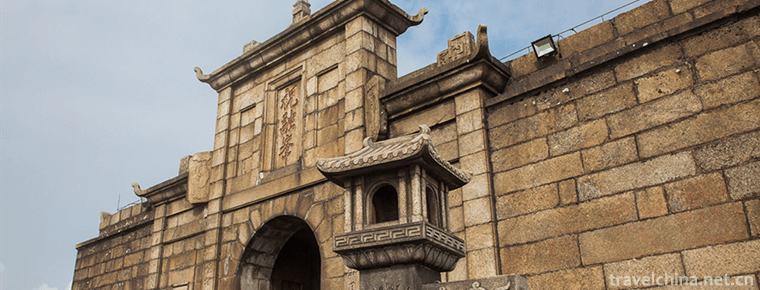
-
Kunming CityStone Forest Scenic
Kunming Stone Forest Scenic Area, also known as Yunnan Stone Forest.
Views: 291 Time 2018-10-21 -
Zhouzhuang Town
Zhouzhuang Ancient Town is a preferred site for world cultural heritage and the first batch of national 5A tourist attractions. It is located in the southeast of Suzhou City and at the junction of Kun.
Views: 327 Time 2018-12-06 -
Yunlong Lake
Located in the southwest of Xuzhou City, Jiangsu Province, Yunlong Lake is the main scenic spot of Yunlong Lake Scenic Area in Xuzhou, formerly known as "Stone Dog Lake".
Views: 122 Time 2018-12-06 -
Water Margin City Scenic Area of the Three Kingdoms
The Wuxi Film and Television Base of CCTV is the first large-scale film and television shooting and tourism base in China. Founded in 1987, it is the first theme park in China that combines film and t.
Views: 154 Time 2018-12-18 -
The Old Site of Command of 115 Division of Shandong Province Government and Eighth Route Army
The former site of Shandong provincial government and 115 division headquarters of the Eighth Route Army is the headquarters of 115 division of the Eighth Route Army, Shandong Branch of the Communist .
Views: 123 Time 2019-02-08 -
72 Sorcery Music of Lingyun Zhuang Nationality
The 72 witchcraft tunes of Lingyun Zhuang nationality originated in Lingyun County, Guangxi, mainly centered on Sicheng Town, where the county government is located. It is a tune sung by the Zhuang wi.
Views: 181 Time 2019-05-13 -
Miaos Rock planting Custom
Traditionally, the Miao people have a kind of public deliberation and legislative activities called "burying rock" (also known as "planting rock". When burying rock, they bury a re.
Views: 192 Time 2019-06-05 -
Cooking Techniques of Beef and Mutton
Strict raw materials for roasting whole sheep should be two-year-old lambs. Paste made of egg yolk, salt, cumin, pepper, flour, etc. will be applied to the whole sheep after treatment, and the head of.
Views: 308 Time 2019-06-08 -
Reba Dance
Reba dance is a form of dance performed by Tibetan "Reba" artists. Reba is a group of street artists who make a living selling arts (usually composed of family as the basic unit) performing,.
Views: 174 Time 2019-06-11 -
Shizhu Tujia Luoer Diao
Shizhu Tujia Luoer Diao originated from Shizhu Tujia Autonomous County, Chongqing. It is a folk song of Luoer tune, which is popular among the Han and Tujia nationalities in southeastern Chongqing. It.
Views: 282 Time 2019-06-15 -
Jumping Cao Gai
Caogai jumping is prevalent in Baima Tibetan area of Pingwu and Nanping counties. It is held on the sixth day of the first month of the lunar calendar every year. Cao Gai is a Baima Tibetan phonetic t.
Views: 101 Time 2019-06-21 -
Longtan Karst Cave Scenic Spot
Longtan Karst Cave Scenic Area is located at the foot of longcuban mountain, Miyi Baima Town, Panzhihua City, Sichuan Province, with an altitude of 1500 meters. It is a provincial-level scenic spot and a national AA level tourist area..
Views: 117 Time 2020-10-15
